How Jets landed Aaron Rodgers and may have changed the course of their franchise
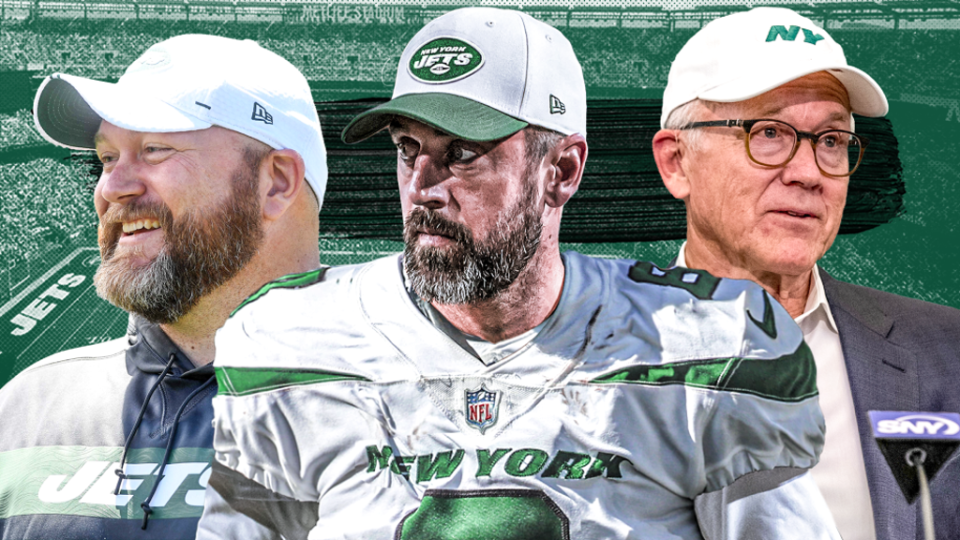
The light from the television was all that illuminated the room. It was a lullaby of sorts for Joe Douglas, sound asleep on his couch a few feet in front. His wife Shannon, along with kids Addison, Leighton and Thomas, had long since retreated upstairs. Douglas’ lone companion was his cell phone, resting on his chest, rising and falling with each deep breath.
It had been a week for the Jets general manager and the team. First, he was in Indianapolis for the NFL Combine. That’s where he realized acquiring quarterback Aaron Rodgers was a distinct possibility. He then flew home to Chatham, N.J., only to get back on a plane a day later, this time to California to meet with Rodgers at his Malibu home. Now, he was back in Chatham, waiting on bated breath to find out if Rodgers wanted the Jets as much as the Jets wanted him, or if the team’s search for a quarterback needed to go down a different path.
That visit with Rodgers was four days ago, and Douglas still had no idea what was to come. He was on edge, tense. Any sleep, no matter where it came, was a blessing. And at this point, his couch in front of the TV felt like a beach chair on a summer shoreline.
Then, around midnight, Douglas woke when his phone buzzed. It was an incoming call from Dave Dunn of Athletes First, the agent for Rodgers.
He answered. The words Douglas heard may very well have redirected the course of the franchise.
Aaron’s going to be a Jet.
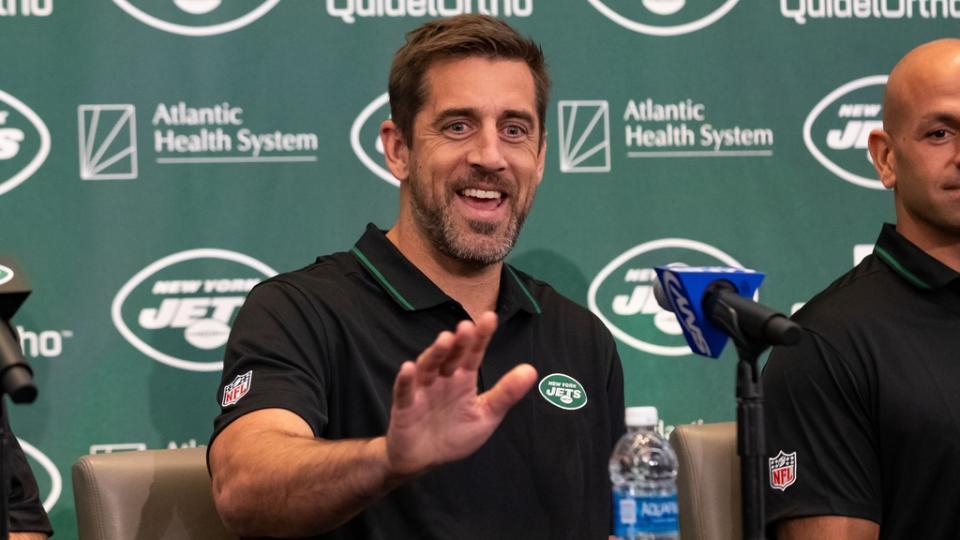
* * *
It wasn’t an easy decision. In hindsight, it doesn’t look like it was the right one. It was, though, at least at the time, what the Jets felt was in the best interest of their team.
The 2020 season was one of the worst in franchise history. The reward? The No. 2 pick in the NFL Draft. No, that wasn’t good enough to select phenom Trevor Lawrence, but Clemson’s golden-locked passer wasn’t the only quarterback in the class.
The Jets had their choice of consolation prizes. There was Ohio State’s Justin Fields. There was North Dakota State’s Trey Lance. There was Alabama’s Mac Jones. There was BYU’s Zach Wilson. Or, there was the alternative, favored by some in the building.
New York could trade the selection for a massive haul and run it back with Sam Darnold, the former No. 3 overall pick whose struggles during his first three years were largely attributed to the lack of talent around him.
Again: It wasn’t an easy decision. To help make it, Douglas took a different approach. He imagined Darnold was among the list of players he could draft. He then scouted all in a vacuum. At the conclusion, he posed himself a question: Who would I select?
Darnold received the nod over Fields, Lance and Jones, but things were different with Wilson. Douglas saw a player with elite arm talent who could throw from so many different angles. Wilson didn’t need a perfect pocket to have success – he seemed to improve when things got muddy. There was also a clear ability to work through progressions, accuracy at all three levels, and even some next-level wow throws. The tape was good. Really, really good.
Douglas’ conclusion, he wrote: He’d draft him over Darnold.
So, on April 29, 2021, the Jets did.
But now it was January of 2023.
The Jets believed, and still do to some extent, that Wilson can be their franchise quarterback. But his first two seasons were viewed as a failure. Instead of taking a jump in 2022, Wilson graded out last among 39 qualifying quarterbacks to play at least 20 percent of their team’s snaps, per ProFootballFocus, with a 46.5 offensive grade. Internally, teammates, coaches and staffers knew they couldn’t consistently win with Wilson. It’s why, on two separate occasions his sophomore year, they turned to someone other than a healthy Wilson to help save their season.
The draft is an inexact science — an “educated crap shoot,” former Jets head coach Todd Bowles once said perfectly. It’s why Wilson is not an anomaly, but the norm.
The Jets were already eliminated from the playoffs before their season finale against the Dolphins this year. That stung all who were involved, considering New York’s 6-3 start. So, before the game, chairman Woody Johnson, head coach Robert Saleh, Douglas, assistant general manager Rex Hogan, and president Hymie Elhai sat together trying to figure out what went wrong. What could they do to take that next step as an organization?
Unanimously, they reached the same conclusion: The Jets had a championship-level defense, playmakers littered at their skill positions, and an offensive line that, when healthy, was above average.
Basically, they had everything but the quarterback.
It would have been easy for ownership to take the decision out of Douglas and Saleh’s hands and force them to find a way to make it work with Wilson. After all, it was those two who determined Wilson was worth the second overall pick. Seldom is another at-bat granted after a strikeout like that.
Instead, Douglas and Saleh received the Johnsons' blessing to make another run. They would have the free range to pursue whoever they wanted to pursue, then the resources (financial, draft compensation in a trade, or both) to acquire the player they believed could get them where they wanted to be. The only thing Woody and Christopher Johnson cared about was winning. They were willing to do whatever it took to win.
So, if that meant acquiring a quarterback, well, then it was time to go get him.
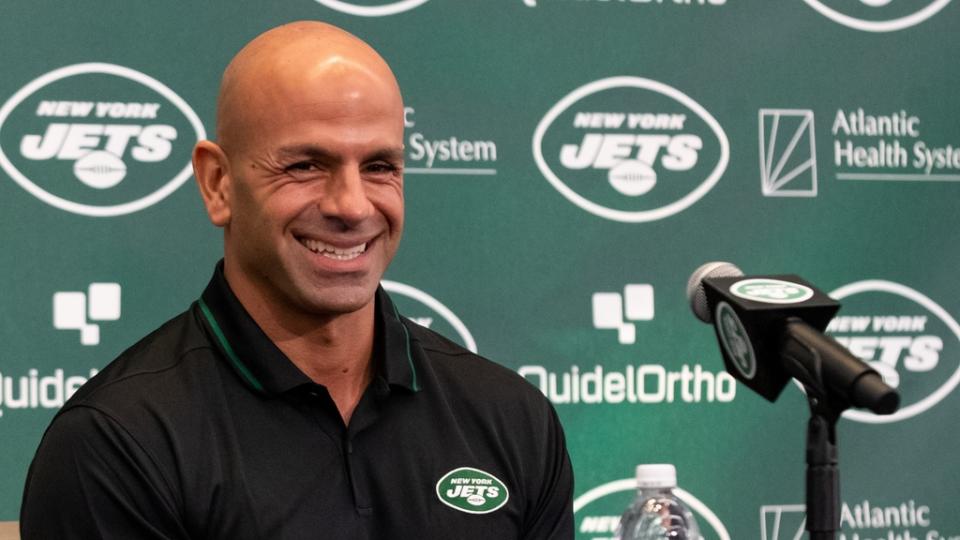
* * *
Exhaustive doesn’t truly begin to describe it. The Jets tasked some of their most important decision-makers (Douglas, Saleh, Hogan, offensive coordinator Nathaniel Hackett, director of player personnel Chad Alexander, director of pro personnel Greg Nejmeh) with evaluating 19 potential quarterbacking options for the 2023 season. These were guys from whom they could sign or trade. They then separated those quarterbacks into three tiers.
Tier 1: Players who would have the Jets competing for a Super Bowl.
Tier 2: Players who would have the Jets in the playoffs.
Tier 3: Players who would make the Jets slightly better, but not closer to their ultimate goal.
There were few in that first tier. Rodgers was there. So too was Baltimore’s Lamar Jackson and L.A.’s Matthew Stafford. The Jets studied the latter two, but it wasn’t long before it became clear Jackson wasn’t leaving the Ravens and the Rams recommitted to Stafford. Even still, though, Rodgers was among those who fascinated New York the most.
The Jets knew he was older (turned 39 in December) and they knew he was coming off a statistically down year (8-9 record, 64.6 completion percentage, 3,695 passing yards, 26 touchdowns, 12 interceptions), but the more they studied, the more they attributed his issues to a thumb injury suffered against the Giants in Week 5 that never truly recovered.
But, get him healthy? Keep him upright? Give him proven receivers? The Jets were hellbent in their conviction he’d compete for a fifth Most Valuable Player award. Put that caliber of player on their roster, and, overnight, they’d become a team capable of not just competing, but winning a Super Bowl.
That’s why any pursuit of Rodgers was less about his ability, and more about how realistic acquiring him was. There were so, so many variables at play — all of which threatened to derail an acquisition at various points this offseason.
Did he still want to play? Douglas felt he did. He watched Green Bay’s playoff-eliminating Week 18 loss to the Lions. He didn’t feel like Rodgers was done as he saw him walk off the field.
Did he want to return to Green Bay? Douglas had an idea on this one, too. The way his arm rested on Randall Cobb while leaving Lambeau Field, the way he seemed to take everything in, he thought he saw a player who wanted to start a new chapter.
But did he want to play for the Jets? That was something Douglas, still in a funk after the way the season ended, couldn’t decipher.
So, he called Packers general manager Brian Gutekunst.
It was exploratory — nothing too deep or too long. Gutekunst made it clear he didn’t know what was going to happen, and that Rodgers and the Packers were still working through some things.
He did say, though, that he was under the belief that if Rodgers wanted to continue to play, the Jets were among the teams he’d want to play for.
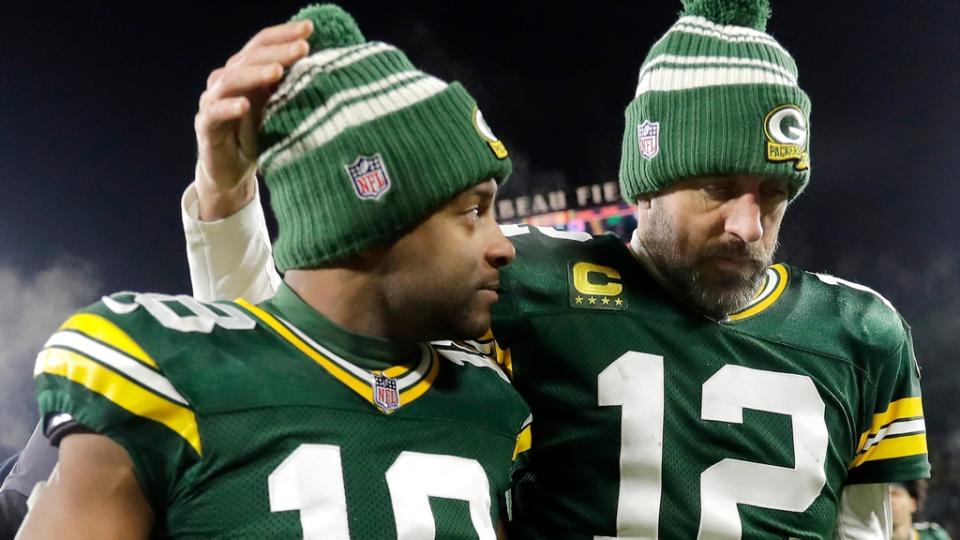
* * *
Rodgers was the Jets’ top option because there was a universal understanding of what the team could accomplish with him under center. The Jets viewed him as someone capable of adding five wins to their total from a year ago. No other player came close to that.
But at no point was acquiring Rodgers a sure thing. It’s among the reasons the Jets refused to think about taking a step beyond the present. They wanted him. Everyone knew that. They never let themselves believe they had him.
So, they prepared for Plan B. Atop their second tier of potential quarterbacks was the Raiders’ Derek Carr, followed closely by Tennessee’s Ryan Tannehill. They genuinely liked Carr. They believed they could accomplish great things with him. That’s why they brought him to their facility before the NFL Combine. That’s why they wined and dined him. Carr talked about family and football with Douglas, bonded with Saleh over golf.
Carr wasn’t Rodgers, but he was pretty damn good. Just one player in Jets team history has thrown for 4,000 yards in a season — and that was Joe Namath. Carr has eclipsed that milestone four times and is a four-time Pro-Bowler for a reason. Carr, who turned 32 in March, had years of good ball in front of him.
The Jets didn’t want to give anyone a song and dance, so they made it clear to Carr that they didn’t want to move forward with any signing until they knew of Rodgers’ plans. However, there was some thought given to just signing Carr knowing he was the sure thing. Carr wanted a deal before free agency began. In a perfect world, the Jets would find out what Rodgers wanted before that, and if it wasn’t the Jets, they could fully commit to Carr. But the Jets weren’t the only team pursuing Carr, and he wasn’t going to wait forever.
By waiting for Rodgers, the Jets risked losing both Rodgers and Carr.
That’s a big risk.
The team determined at the NFL Combine that it was one worth taking.
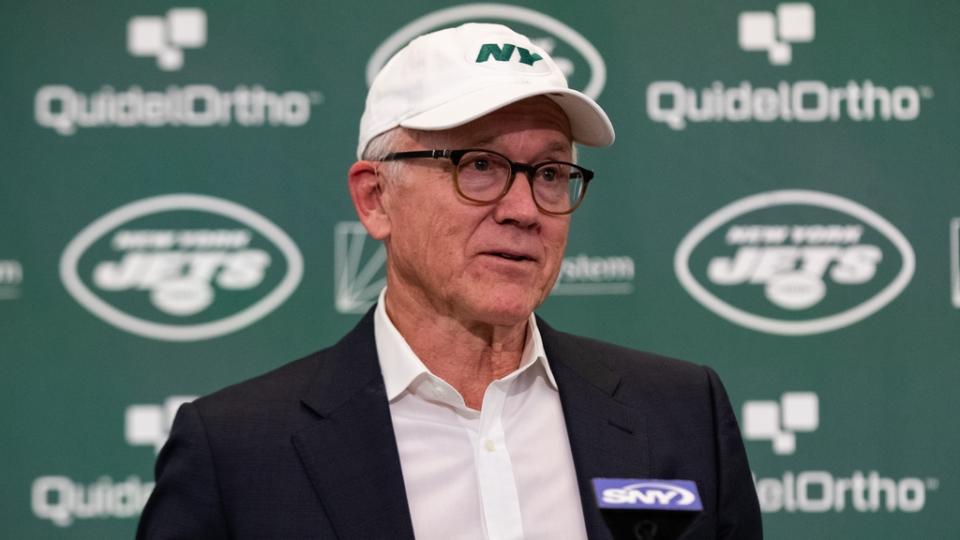
* * *
Conversations between the Jets and Packers were limited after their initial end-of-season chat. They touched base, but neither side really knew what Rodgers wanted. That changed in Indianapolis. Gutekunst approached Douglas and was as frank as he could be, telling the Jets general manager that Rodgers coveted New York more than any other destination… if he wanted to continue to play.
That last part is what was so important. Rodgers wasn’t returning Green Bay’s phone calls. The Jets couldn’t talk to Rodgers because he was under contract with the Packers. Something needed to change if this was going to happen, so Gutekunst gave the Jets permission to speak to Rodgers’ agent.
The Jets did, and those conversations went well. So, just before the end of the combine, Gutekunst gave the Jets a full week to speak to Rodgers, expiring on March 11.
Douglas first sent Rodgers a text. The two began going back and forth. Saleh gave Rodgers a call. Hackett, too. They were productive. But Saleh had an idea: Why not, if he’d welcome them, put the phones down, fly out to California, and meet with Rodgers in person? Douglas agreed, so Saleh broached the subject to the quarterback on Monday. On Tuesday, Douglas, Saleh, Elhai and Hackett boarded a private plane to California — a trip that took a good one-and-a-half hours longer because of headwinds. Woody and Christopher Johnson met them there.
The group spent the entire afternoon at Rodgers’ house. There was no elaborate business pitch. Everyone was themselves. They talked about football, family, careers, how they got to where they are. Saleh was particularly fascinated with Rodgers’ darkness retreat.
It was all going well until Rodgers’ security cameras picked up the paparazzi outside his door — the first unintentional leak from the Jets in their pursuit. Rodgers joked with the group, asking if they brought them. The Jets contingency then left, with photos of their departure quickly making the rounds on social media.
Saleh, Douglas, Hackett and Elhai grabbed dinner at a Mexican restaurant in Santa Monica. They spent most of the meal rehashing what had just happened. All came away feeling the same: That went really, really well. Wednesday morning, they flew back home.
Douglas spoke to Rodgers one final time before permission expired. The quarterback called him Friday on his way to a charity football event.
Then, days later, came his wake-up call from Dunn.
Douglas didn’t get back to sleep that night until 4 a.m. He spent the ensuing hours firing off texts to Saleh, Elhai, and the Johnsons. He didn’t want to wake them with calls. He wanted them to wake up in the morning to the news that collectively, they were able to change the course of the team.
* * *
Because their permission to speak to Rodgers expired that Saturday, the quarterback’s March 15 appearance on The Pat McAfee Show was the first time they heard him say himself that his intention was to play for the Jets. They knew it already, but they needed to hear it from him.
Now that they did, they figured the rest would be easy. This wasn’t like their failed pursuit of ex-Chiefs wideout Tyreek Hill, who chose the Dolphins instead. Rodgers wanted the Jets, and only the Jets. The Jets wanted Rodgers, and only Rodgers. The Packers already made their decision to move on to Jordan Love, so their only option was to trade Rodgers to the Jets.
It seemed like a trade — now that everyone knew Rodgers’ mind was made up — should be easy to piece together.
It was not.
Rodgers didn’t just say his intention was to play for the Jets; he was almost too open and honest. He said he was “90 percent retired” before his darkness retreat, which spooked some of the Jets internally. Rodgers also criticized the Packers for their lack of communication during the offseason, when, from Green Bay’s perspective, it was Rodgers who was avoiding their calls and messages.
Because of this, the Jets had concerns about offering more in compensation. The Packers, after being dragged publicly by their former quarterback, didn’t care much to come off their demands of two first-round picks. Both sides dug in. Neither was willing to budge.
Considering the first real deadline wasn’t until April’s NFL Draft, a standoff began.
That didn’t change until the NFL’s annual meeting, when Douglas and Gutekunst, together for the first time since Indianapolis, had productive conversations. Three weeks later they reconvened again with a determined effort by both sides to get something done.
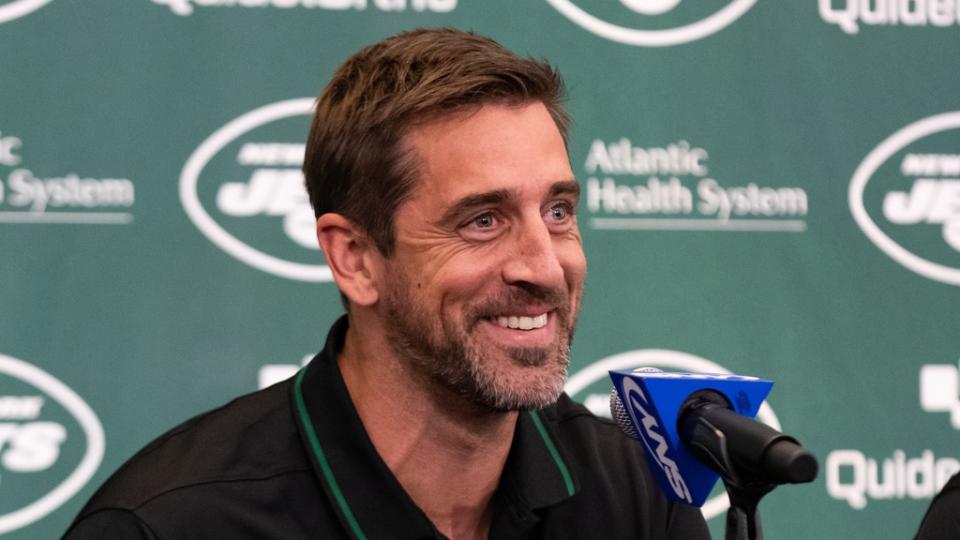
* * *
On April 24, Douglas was in a meeting with Saleh and his coordinators (Hackett, Jeff Ulbrich, Brant Boyer) when his phone rang. It was Gutekunst. He looked around the room and joked that he had to take the call from “up north.”
For the next 45 minutes, Douglas and Gutekunst went back and forth. The framework of the deal was already, at this point, basically done. The final point of contention: What percentage of Rodgers’ playing time would make the conditional 2024 pick a first-rounder?
The Packers wanted less. The Jets wanted more. They agreed to split the difference.
Douglas called Woody Johnson, who signed off on the compensation. Then Douglas called Gutekunst back and told him to send over the paperwork.
After, Douglas walked by senior director of football administration David Socie’s office, who was in the middle of a draft meeting with other front office personnel, and gave the group a thumbs up. He then walked into Saleh’s coordinator meeting, which had continued without him.
Not much needed to be said, so he kept it brief: We’ve got a new quarterback.
There were high-fives and laughs. Hugs. This was such a long time coming that the fact it actually came was almost unbelievable. Douglas tried to restart the meeting before he realized it was a lost cause.
No one could focus.
Excitement reigned supreme.
Business would have to continue tomorrow.
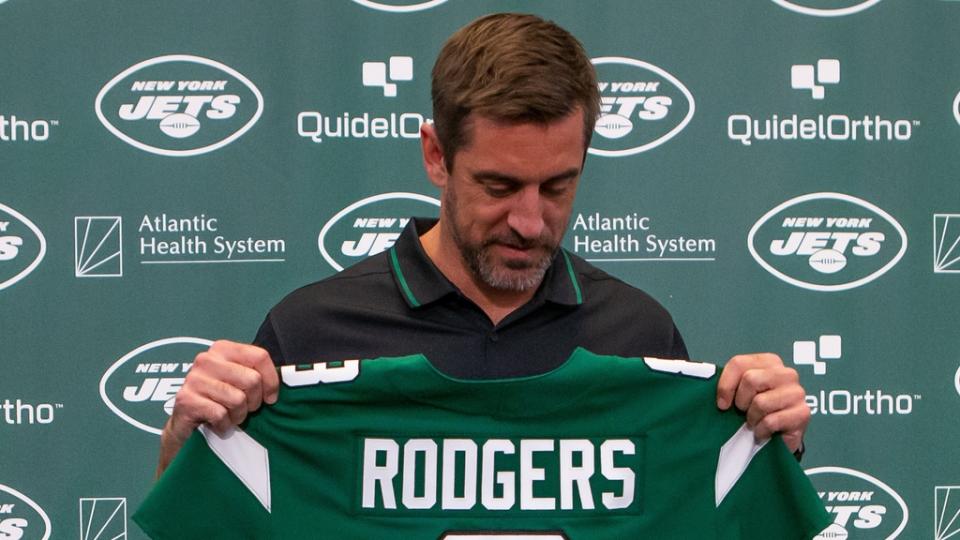
* * *
In some ways, seeing is believing. That’s what made Rodgers’ first walk through the doors of the Atlantic Health Training Facility so powerful. Things like this don’t usually happen to the Jets. It’s why members of the team refused to let themselves believe this was actually going to happen until it actually did.
Rodgers, their top choice, was here — actually here. And even more important: It wasn’t because he had to be. Rodgers wanted to be.
This wasn’t forced. He could have picked retirement. The Raiders would have made a fine suitor. If he screamed loudly enough, he likely could have forced his way to the 49ers. The Jets, then, would have to look elsewhere.
But that didn’t happen. Aaron Rodgers chose to be the new quarterback of the Jets.
And, in turn, the Jets didn’t get a guy — they got their guy.

